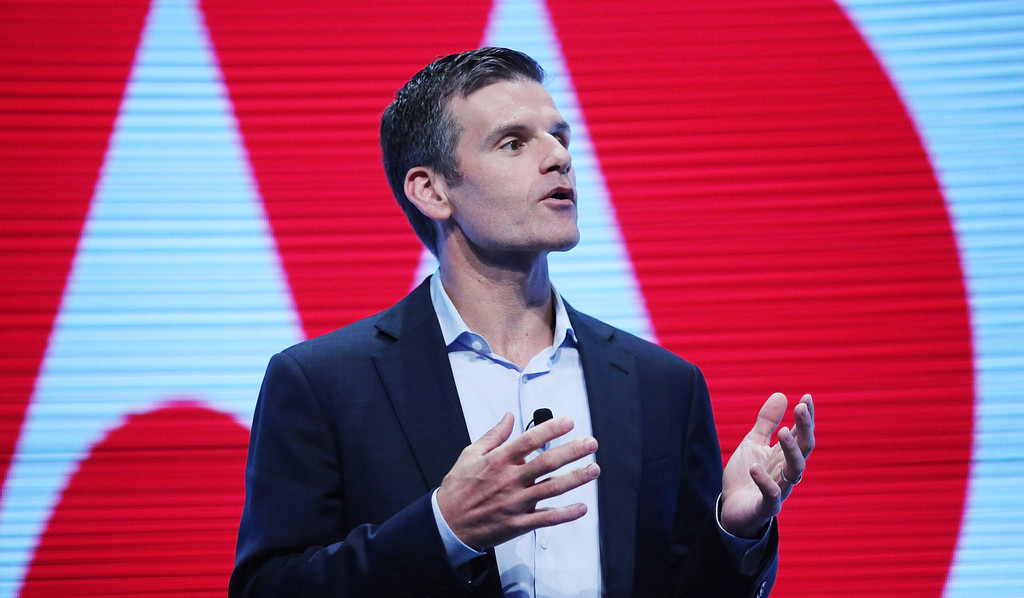Imagine Facebook without Mark Zuckerberg, or Tesla without Elon Musk. Even thinking about JPMorgan Chase without picturing Jamie Dimon is hard if you follow Chase even casually.
In today’s business and media landscape, the CEO role extends far beyond the traditional confines of boardrooms and executive suites. An analysis of articles written about current Fortune 100 CEOs and their companies shows a strong correlation with those CEOs who are quoted in the press and the position of their organizations.
It’s difficult to separate the cause from the effect here (large and successful companies are media magnets after all), but successful CEOs use various PR strategies and channels to engage with stakeholders, share insights, and shape narratives. The trend toward increased CEO visibility isn’t merely a matter of ego, or personal preference, though it certainly might feed their vanity. But at a corporate level it’s a strategic imperative with real implications for company reputation and even performance.
A visible leader is an engaged leader
Eleanor Hawkins of Axios highlights the growing prominence of CEOs in the Fortune 100, noting their heightened presence across social media platforms and in long-form media interviews. According to Paul Argenti, a professor of corporate communication at Dartmouth College, such visibility can be a critical component of effective strategy execution.
CEOs have a key role as conduits to various stakeholders, including shareholders, employees, and the press. By proactively engaging with them, business leaders can foster transparency, build trust, and shape perceptions of their companies. In particular, the C-level bully pulpit can be a powerful tool for amplifying corporate messaging and generating buzz around key initiatives.
But what exactly does CEO visibility entail, and why does it matter? An effective approach involves more than just making occasional public appearances or issuing carefully crafted statements. It’s about actively participating in conversations, sharing perspectives, and demonstrating leadership on issues that resonate with stakeholders.
Avoiding pitfalls isn’t that hard
What about the risks? It’s essential to strike the right balance. While being outspoken can garner attention, it also means thoughtful planning and a willingness to take some criticism—especially for leaders representing large brands with diverse customer bases.
Nevertheless, CEO visibility doesn’t have to mean provocative commentary or grandstanding. Instead, it’s about engaging authentically and meaningfully on relevant issues of the day. The MuckRack analysis of CEO media coverage shows that while political comments or crisis response drove some stories, “most executives were simply weighing in on 2023 industry trends.” Whether it’s commenting on changes, addressing corporate challenges, or championing social causes, CEOs have a unique opportunity to shape narratives and influence perceptions.
Stakeholder engagement and success are correlated
The data speaks for itself. CEOs who embrace visibility and engage actively with stakeholders often enjoy greater corporate visibility and, by extension, enhanced business outcomes. Take Elon Musk, for example, whose prolific presence on social media has helped propel Tesla to the forefront of public awareness. His visibility on X, the social platform where he reigns as the de facto CEO despite lacking the title, by contrast, has not worked well, depending on what you think his goals are. But that’s because his most obvious role on X has been Chief Troll.
Other Fortune 100 CEOs, like Satya Nadella and Bob Iger, have done well by leveraging their visibility to drive corporate narratives and shape public discourse. By commenting on industry trends, sharing insights, and demonstrating thought leadership, they have solidified their positions as influential voices in their sectors.
In essence, CEO visibility isn’t just a vanity metric or a passing trend—it’s a strategic imperative with tangible benefits for companies and their stakeholders. By embracing transparency, authenticity, and proactive communication, CEOs can enhance corporate reputation, drive engagement, and ultimately, achieve sustainable business success. As Argenti puts it, “It’s really a shortcut for an organization to communicate their strategy.” So, to all the CEOs out there: It’s time to step into the spotlight and make your voices heard. Your stakeholders—and your bottom line—will be the better for it.






